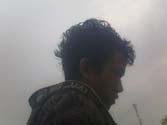One of Indonesian’s last frontiers, Kalimantan’s Mahakam river is a gateway to adventure
East Kalimantan is easily as rich in wild, untamed nature and culture as it is in crude oil. Kalimantan is also one of Indonesian’s most isolated regions. This has helped preserve the traditions of its Dayak culture, and kept the forest at the upper Mahakam River in good condition for visitors.
On arrival in Balikpapan, just beyond the oil storage tanks, lies a forest reserve – visit it straight from the airport for your first high oxygen experience of Kalimantan. After a 40km drive over the inland belt of gentle hills, leave the paved road and get onto a thick and muddy one. You enter a tunnel of trees as your four wheel drive jeep careens sideways through heavy mud.
Bukit Bankirai Nature Reserve is a protected jungle area of 18,000 hectares, where Bankirai hardwood tree species over a hundred years old loom all around you. But the main attraction here is the tree-top canopy bridge hanging 30 meters above the forest floor in this dense, hilly forest. Your nerves will be tingling as you walk along the rope bridge, seemingly stepping out into nothingness. Yet for the brave, your feeling of freedom will rise between these mighty trees scattered throughout the canopy. Welcome to the jungle.
The drive to Samarinda is peaceful and, thankfully, mudfree. Your evening arrival to the city offers the first scenic view of the tremendous Mahakam River, the third longest between the coast and the deep interior. These liquid highways attract visitors seeking to head into the jungle regions to visit the traditional Dayak tribes. Once headhunters, they still live in communal hardwood longhouses.
The dense jungle and wide terrain of wetlands have traditionally kept the region isolated from all but the more adventurous travelers. The best way to visit indigenous Dayak settlements along the Mahakam River is by motor canoe or houseboat. The first village after Samarinda city is Tenggarong, which has a waterfront and Sultan Palace turned museum. It huses impressive heirlooms, ceramics, and Dayak art and culture.
Tenggarong has a mix of Kutai, Dayak and Bugis tribes, and is the perfect place for a stroll. Traditional Dayak longhouses filled with vibrant designs can be found at Kumala Island in the middle of the Mahakam River in front of Tenggarong. Its 40 family room longhouses are painted with the characteristically flowing geometrical designs used by the Dayak to portray scenes of jungle life. Each carries Chinese and Vietnamese Dong Son influences, telling the historical stories of Kalimantan’s tribes.
Move further up the Mahakam to reach Muara Muntai, the next stop for sightseeing at the hardwood floating village, before you cross over the Jempang Lake hopefully escorted by freshwater dolphins beside your canoe, going towards Ohong Creek.
Drive through a forest tunnel and listen to the calls of long nose monkeys, hornbill and sunbirds above you. Before long, these calls turn to human ones, as you’re welcomed by a traditional ceremony of the Dayak Benuaq tribe at Mancong village – the oldest longhouse in East Kalimantan. The Dayak religion is based upon Kaharingan, a form of animism. Traditional belief is that at death, the human spirit ascends to a mountain where the spirits of past ancestors of the tribe reside. Over the last two centuries, most Dayaks converted to Christianity. The most lasting feature of Dayak social organization is longhouse living, usually along a terraced riverbank. At one side is a long communal platform, from which individual households can be reached. Longhouses have a door and apartment for each family; a longhouse of 200 doors is a settlement of 200 families.
At sunrise, continue by motorized canoe upstream on the Mahakam River to Muara Pahau village at the delta of Bongan River. Make a short stop at RASI Dolphin Information Center. This journey takes you through tropical forests and dense undergrowth draped in giant orchids, mangrove flowers and lianes.
The wildlife is diverse, and includes monkeys, gibbons, wild ox, wild cats, freshwater dolphin, orangutans, sun bear, parrots, parakeets and crested fireback pheasants.
Dayak elders still practice traditional medicine and mark their status with intricate body tattoos and ear adornments. Everywhere along the river, you will be a welcomed guest as you enjoy the colorful longhouse art and learn about their mystic beliefs.
For those seeking even wilder adventures, try passing the rapids in the middle - to - upper part of the Mahakam. Here, great 50 to 200 meter rocky walls stretch into the sky, reminiscent of the Grand Canyon. Ahead of these walls, virgin rainforests await you – brilliantly cut off from the glare of reality by this natural break in Kalimantan’s great highway of life.





0 komentar:
Posting Komentar